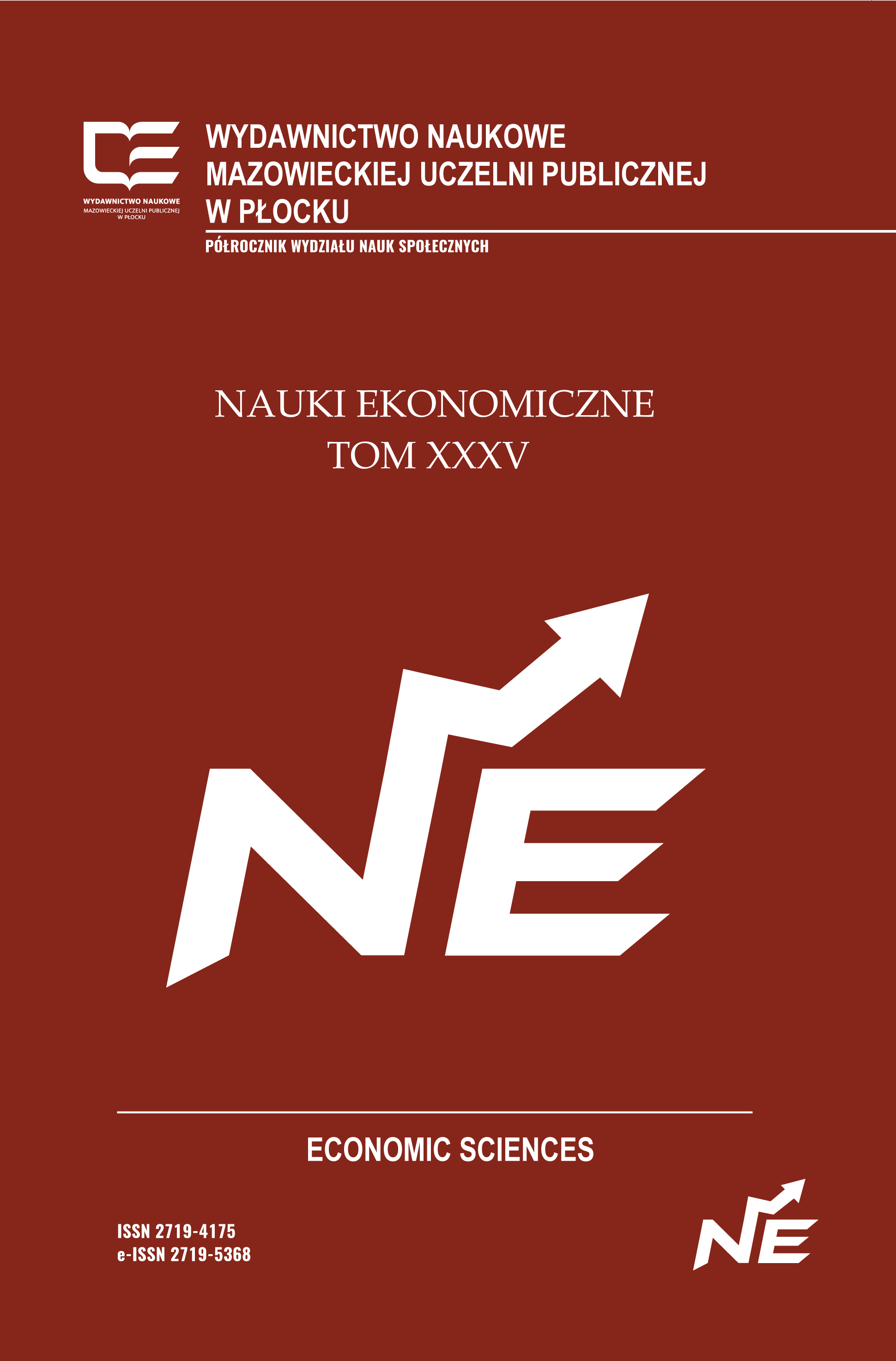ANALYSIS OF DELISTING ON THE WARSAW STOCK EXCHANGE
DOI:
https://doi.org/10.19251/ne/2022.35(16)Keywords:
delisting, dematerialisation of shares, Warsaw Stock Exchange, bankruptcy, merger and acquisitionAbstract
The purpose of the article is to assess the significance of the delisting of companies from the Warsaw Stock Exchange and the impact of it on the development of the stock exchange.
The article discusses the delisting of companies from the main market of the Warsaw Stock Exchange. The exclusion of a company from trading on the stock market is regulated by many regulations, which precisely describe the procedures and conditions of this operation. The work begins with an analysis of the legal provisions regarding the possibility of companies leaving the Warsaw Stock Exchange depending on the entity initiating this operation.
Collecting in the article statistical and qualitative data concerning significant data from the WSE, the number of companies listed on the stock exchange, number of IPO and delisting made it possible to determine the significance of the delisting from the stock exchange for the functioning of the market.
The author also compared and analyzed detailed data on the reasons for leaving the stock exchange in the years 2000 to 2020. This made it possible to create a list of all the reasons for listed companies leaving the WSE and to determine which of them are the most important. According to the statistics presented, most companies were delisted on the WSE as a result of the abolition of the dematerialisation of shares (79). Another reason was a takeover or merger (64), while 65 companies were withdrawn from the stock exchange due to bankruptcy. However, it should be emphasized that the creation of a ranking of withdrawals depends on their typology and qualifications.
The data results presented in the article prove the need for further analysis of the subject of withdrawing companies from the Stock Exchange and the impact on the polish capital market.
References
Asyngier R., Skuteczność wezwań do sprzedaży akcji na polskim rynku kapitałowym w Annales Universatis Maria Curie Skłodowska, Lublin 2017,
Bartkowiak R. Ostaszewski J. (red.), Oficyna Wydawnicza SGH, Warszawa 2008, część II;
PIA Piasecki – specyfika upadłości w budownictwie, w: Meandry upadłości przedsiębiorstw. Klęska czy druga szansa?, E. Mączyńska (red.), Oficyna Wydawnicza SGH, Warszawa 2009,
Frydrych S., The Delisting of a Company from the Warsaw Stock Exchange as a Result of the Cancellation of the Dematerialisation of Shares –Tender Offer Price vs. IPO Price, w Annales Universatis Maria Curie Skłodowska, Lublin 2020,
Klibisz K., Majewska M., Wybrane problemy dematerializacji papierów wartościowych, „The Journal of Management and Finance”, Wydział Zarządzania Uniwersytetu Gdańskiego, Gdańsk 2012,
Kołodziejczyk L., Analiza przyczyn wycofania akcji polskich spółek z obrotu publicznego w latach 2000– 2014, w: O nowy ład gospodarczy w Polsce,
Królik-Kołtunik K., Przymusowy wykup akcji na Giełdzie Papierów Wartościowych w Warszawie w Annales Universatis Maria Curie Skłodowska, Lublin 2015,
Pietrzak E. (red.), Projekcja rozwoju rynku kapitałowego, polityki kursowej i rynku walutowego oraz rynku pochodnych instrumentów finansowych do roku 2003, Instytut Badań nad Gospodarką Rynkową, Gdańsk 1999,
Wolak D. W tym roku pojawiły się plany 7 emisji ratunkowych, „Prawo i Gospodarka”, 30 marca 2001.
Akty prawne
Roczniki giełdowe 2001-2021, https://www.gpw.pl/biblioteka-gpw-lista?gpwlc_id=10
Regulamin Giełdy Papierów Wartościowych w Warszawie SA, tekst ujednolicony na dzień 1 stycznia 2022 r.
https://www.gpw.pl/pub/GPW/files/PDF/regulacje/Regulamin_Gieldy.
Ustawa z 29 lipca 2005 r. o obrocie instrumentami finansowymi (Dz. U. 2005, nr 183, poz. 1538).
Ustawa z 29 lipca 2005 r. o ofercie publicznej i warunkach wprowadzania instrumentów finansowych do zorganizowanego systemu obrotu oraz o spółkach publicznych (Dz. U. 2005, nr 184, poz. 1539).
